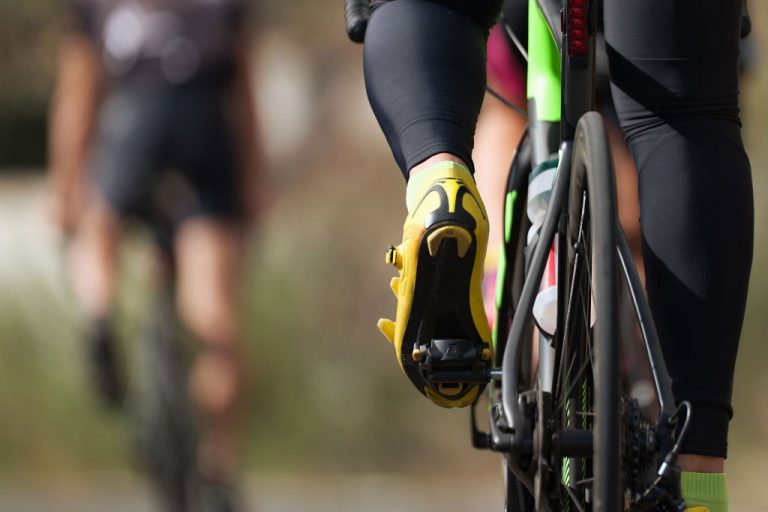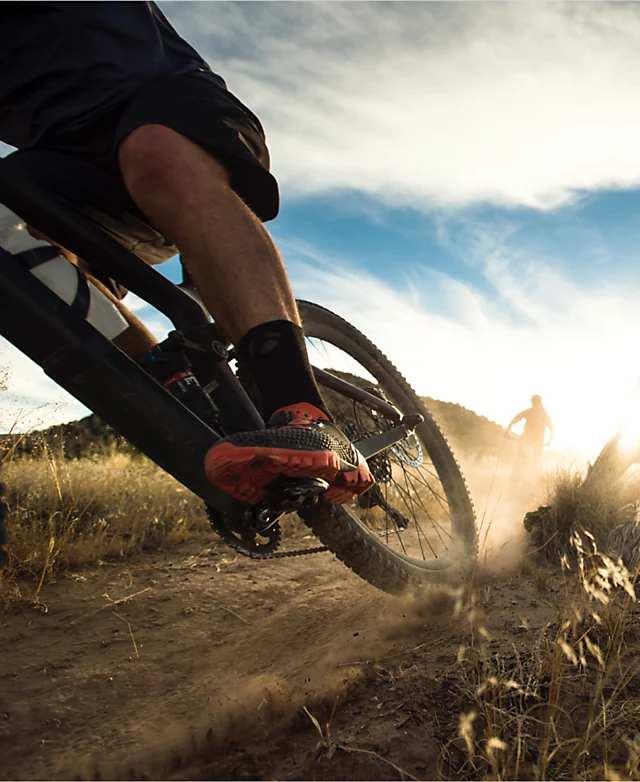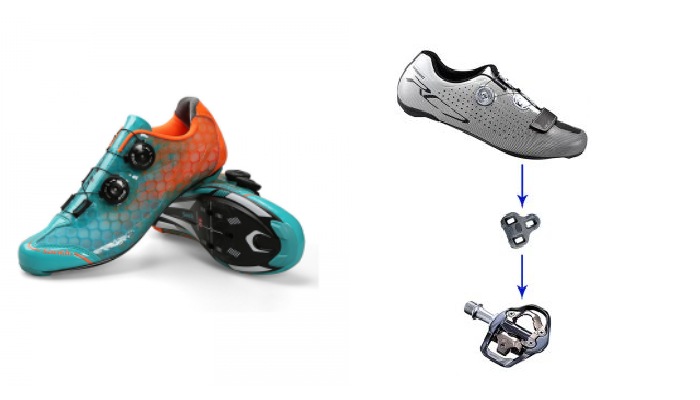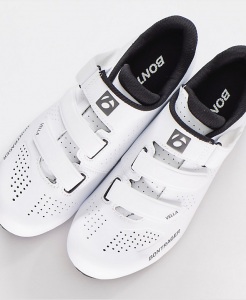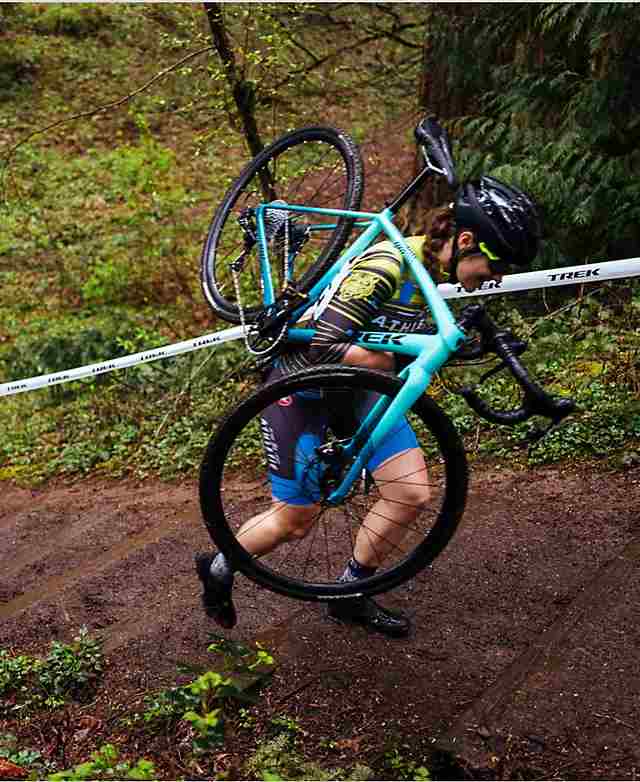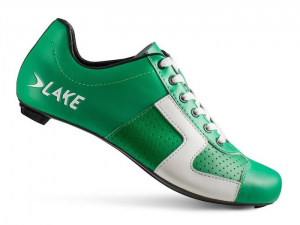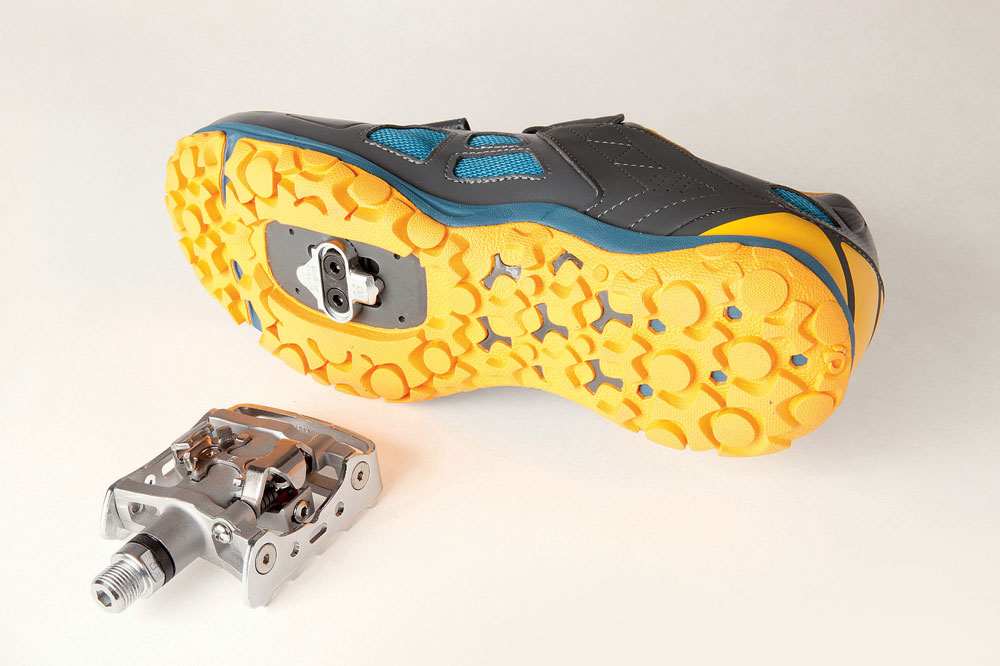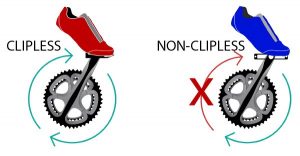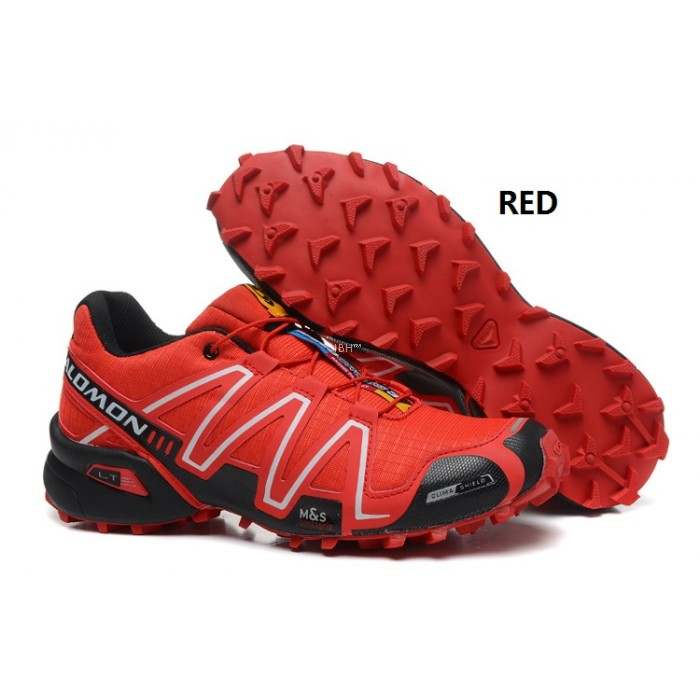Many people appear to be in a quandary when it comes to biking shoes. What are the benefits of cycling shoes? Why wear cycling shoes? How do bike shoes work? And so on. Cycling shoes are of stiff soles and rigid uppers. They support the feet. It is not good for your foot to be swimming in a shoe when cycling. Biking shoes should breathe and ventilate your foot. The foot is the prime mover by transferring power efficiently when pedaling. And don’t forget the aesthetic appeal. Honestly, it is high by itself to see your bike move effortlessly. Horses for courses. So let’s see the varied types of cycling shoes and what is the best pick for you.
Types of Cycling Shoes
1. Mountain Bike Shoes
Mountain bike shoes have another handle; SPD shoes, that is Shimano Pedaling Dynamics. These function on the two-hole system for attaching the shoe to the pedal.
Mountain bike shoes are fashioned to be more flexible and to bestow versatility on the rider. At first glance, they appear to be hiking shoes rather than biking shoes but that is because they are a bit of both.
Mountain bike shoes are not as rigid as road bike shoes as they need to flex a bit and be used for walking as well. Another addition is a rubber sole for traction when walking. So as not to be an impediment to walking, the cleats are located in the sole and not poking out. It is therefore imperative to match your shoe to the pedal for it to work.
Other than clipless mountain bike shoes, there exist shoes without recesses to fit cleats on. These shoes are not usable on clipless pedals; only on flat pedals. There are some MTB riders who still believe in flat pedals.
2. Road Bike Shoes
When compared to mountain bike shoes, road bike shoes score a poor second place in versatility. No walking with these shoes. They are designed solely for cycling. The
sole is very rigid and is of plastic or carbon. But this design allows the maximum transfer of power as the foot is integral with the pedal because of the rigid shoe. The cleats are not recessed into the sole, they stick out so walking in them is a huge challenge. MTB shoes, comparatively weigh more. Speaking of cleats types, actually, you have road shoes which are both of the two cleats as well as the three cleat variety. They are called SPD-SL, the SL is Superleggera which is Italian for super light. A three cleat system increases the contact area and is more efficient than a two-cleat one. Clipless road bike shoes and non-clipless pedals are conflicting.
3. Indoor Cycling Shoes
A spin class is one where you knock yourself out with a high-intensity workout on a stationary bike with a weighted flywheel hooked onto the pedals. These are popular among both men and women. These indoor cycling shoes have soles with treads that grip and a recessed two-bolt cleat system which makes them walkable in. They could probably be rented in a spin class, but if you have a stationary bike at home, go for the three cleat type of indoor cycling shoe.
4. Cyclocross Shoes
Cyclocross shoes are simply mountain bike shoes in a different avatar. The distinguishing feature is spikes affixed to the soles to afford better traction. Given that you will be jumping on and off to circumvent obstacles or sprint uphill, the added traction is a boon.
5. Downhill Shoes and BMX Shoes
This is a flat pedal shoe and specifically deals with controlled mountain biking going downhill. Of course, comfort, protection, and style are thrown in too. Their versatility stretches to bicycle motocross as they provide tremendous grip. Downhill specific models are heavy-duty, with ultra-grippy soles and padded uppers. They bond well with flat pedals and protect the foot. Freeride and all-mountain shoes are pared down in comparison. They have thinner soles so a better pedal feel is the fruit. Uppers are well ventilated to keep the feet cool.
6. Hybrid/ City Bike Shoes
With this pair you get to choose the cleat configuration; 2 cleats for mountain biking or 3 cleats for road biking dependant on riding usage. To be truly dual-purpose, they boast of being crafted to match the versatility and efficiency for both biking and walking and hold up to that promise. City bike shoes have soles of rubber and give a good deal of flex for comfort. With recessed cleats, you can take a stroll down the road in them.
7. Dual-Sided Clipless Pedals
These pedal types deserve pointed mention for their sheer marvel of innovation. One side is totally flat and can be used with any kind of everyday shoe. The other side is clipless for use with clipless biking shoes.
These enjoy tremendous popularity among people who don’t constrict themselves to a particular riding style and put their bicycles to manifold use. As far as practicality and versatility go, they come up tops.
Difference In Bike Shoe Mechanism
Clipless
Don’t be confused with the term clipless. Your shoes very well do clip into the pedals but this term is a leftover because they don’t utilize toe-clips, those cage-like things you see on platform pedals.
Clip-in and clipless are one and the same thing.
Everything is about getting the maximum efficiency. If you exert a joule of energy, you expect to get back that much or close to it. Some loss due to friction is unavoidable. That is the ultimate target of any sport.
Cycling shoes function in concert with pedals that are fitted out with special cleats that the shoe hooks onto. This bestows on the rider greater stability and a means to regulate power output with high efficiency. As the figure clearly depicts, the upstroke is wasted in a non-clipless pedal whereas in a clipless pedal it is utilized in exerting an upward foot pressure.
When switching from regular shoes to clipless shoes do make sure compatibility is not an issue.
Non-clipless
Flat soled shoes were succeeded by clipless shoes. The design incorporated the use of toe clips. They are still used for mountain biking but seldom for road bikes. They are meant to be used in conjunction with the platform or flat pedals.
Closure Types
We have spoken about the importance of the integrity of the foot-pedal configuration often enough. The last link is how well your foot is banded to the shoe. An extra room here and there, ill-fitting shoes, etc. are to no avail.
Velcro
Yes, you tuned in quick; they are very popular because of the ease of both using and adjusting. Normally, two or three straps are provided. They can be adjusted on the go but sadly get mucked up fast with fluff and other debris, so cleaning is a routine thing to keep them in the nick.
The Ratchet System
This is by far the most preferred. Feet tend to swell a bit as you cycle. These can be adjusted on the go rapidly. The cons are that they are more expensive and setting up is a hassle.
Laces
As far as the most comfort and adjustability go, laces win hands down. But on the run, no way. Plus in yucky conditions laces pick up mud and water which makes it a bit messy. If this is your choice too, make sure that the length is trimmed or else it will get trapped in the chain.
FAQs:
1. Do cycling shoes make a difference?
Undeniably. The justification in any power sport is to peak performance. To achieve that no stone should be left unturned. Every little thing matters. Plug all the holes and you will see for yourself.
2. What shoes do pro cyclists wear?
Well, Peter Sagan will be wearing Specializes S-works 7s this season. Other good bets are DMT D1, Fizig infinito R1, Giant, etc. They are very specialized shoes and if your budget doesn’t take a mighty blow, go for them.
Wrapping it up
The types of cycling shoes occupy a hallowed slot in the field of biking sport. You as a biker are now aware of the small slips that can foul tall aspirations. So fix it, and choose your bike shoes carefully when buying. It is not always about performance. The wellbeing of your feet comes first. So the advice here also addresses that issue.
If you love fitness and just want to cycle now and then to work, round the corner, whatever, it is not some commandment to wear specialized shoes; your non-cycling shoes are it flip-flops, sandals or what have you, is doable. The cardio is all-important. Why foot alone, as a responsible biker, don’t litter and wear safety gear always.

